



ORGANS OF PARIS © 2024 Vincent Hildebrandt HOME ALL ORGANS

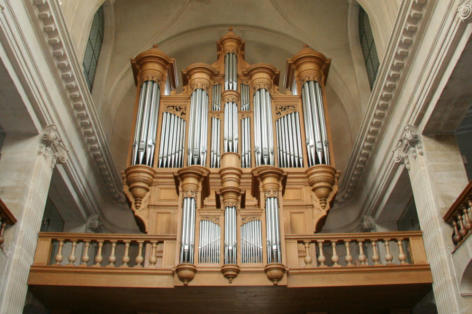

Built in 1294 at Rue des Jardins, the Church of the
Billettes was originally a chapel intended to honor
a miracle that aroused great popular fervor.
Later, a convent in Carme settled there.
The present church and the façade to the right of
the portal were built in 1754-1758 after the
project of Jacques Hardouin-Mansart of Sagonne.
At the Revolution, the church and convent were
disused and sold to private individuals. In 1808,
Emperor Napoleon authorized the City of Paris to
acquire all the buildings and assign them to the
Consistory of the Lutheran Church. It was in 1808
that the Lutheran church moved to its premises.
The interior layout of the church dates mainly
from the Empire and the reign of Louis-Philippe,
except for the altar and lectern of contemporary
creation by Philippe Kaeppelin. Currently, the
parish is part of the tradition of orthodoxy where
organ music and liturgy hold a great place.
D1
From 1810, the temple was equipped with a small
second-hand instrument, installed by Somer.
In 1842, the church acquired one of the first instruments
of the young Aristide Cavaillé-Coll, at the same time as
the Lutheran Church of Redemption, which was then its
annex. The organ was built for the Universal Exhibition in
Paris and was originally intended to serve as a choir
organ in St Roch's Church. Several times transformed by
Cavaillé-Coll (1863), Mutin (1912) and Gutschenrietter
(1945), the instrument consisted of 18 stops on 2
keyboards and pedals, with mechanical transmissions.
In 1978, the parish decided to acquire a new organ,
commissioned from the Muhleisen House in Strasbourg-
Cronenbourg. The old organ was dismantled and
reassembled in 1988 in the chapel le de Jésus Enfant of
the parish of Ste Clotilde (Paris VIIe).
In 1982-1983, the new organ was built and mounted on
the tribune in the back of the nave. It was the first new
organ financed by the city of Paris in the 20th century. It
is an instrument in the German Baroque style, with 29
stops on three keyboards and pedals, with mechanical
transmissions. The buffet was designed by Rémy Mahler.
In 2017, the instrument was overhauled by Muhleisen.
In 1987, the church acquired a small choir organ built by
Muhleisen. This Positive of 4 stops with pedal ‘en tirasse’
would have been sold to a temple in Marseille in the early
2000s.
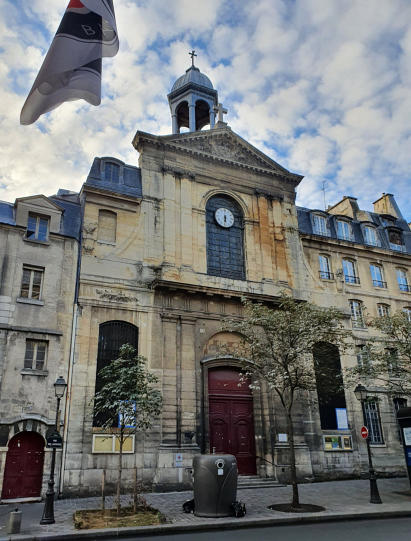
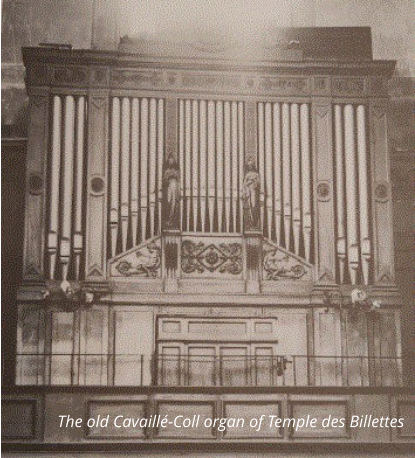
Organiste titulaire
Jacques Amade, Eric Ampeau, Aude
Heurtematte
Concerts
-
Services with organ
Vidéos
-
Photo GO : Jeroen de Haan
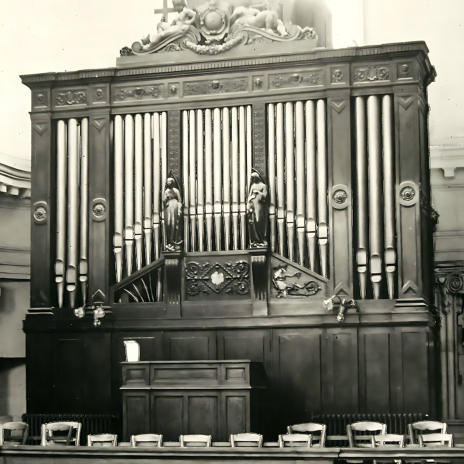
Organs of Paris
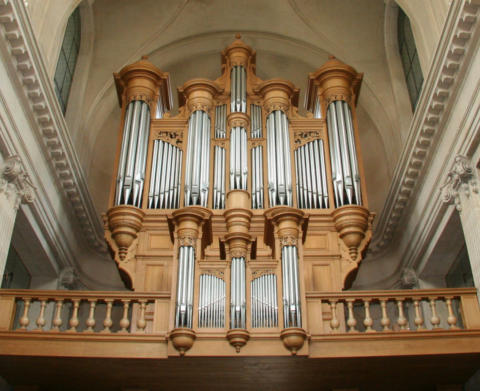
ORGANS OF PARIS © 2024 Vincent Hildebrandt ALL ORGANS
D1
From 1810, the temple was equipped with a small second-
hand instrument, installed by Somer.
In 1842, the church acquired one of the first instruments of
the young Aristide Cavaillé-Coll, at the same time as the
Lutheran Church of Redemption, which was then its annex.
The organ was built for the Universal Exhibition in Paris and
was originally intended to serve as a choir organ in St Roch's
Church. Several times transformed by Cavaillé-Coll (1863),
Mutin (1912) and Gutschenrietter (1945), the instrument
consisted of 18 stops on 2 keyboards and pedals, with
mechanical transmissions.
In 1978, the parish decided to acquire a new organ,
commissioned from the Muhleisen House in Strasbourg-
Cronenbourg. The old organ was dismantled and
reassembled in 1988 in the chapel le de Jésus Enfant of the
parish of Ste Clotilde (Paris VIIe).
In 1982-1983, the new organ was built and mounted on the
tribune in the back of the nave. It was the first new organ
financed by the city of Paris in the 20th century. It is an
instrument in the German Baroque style, with 29 stops on
three keyboards and pedals, with mechanical transmissions.
The buffet was designed by Rémy Mahler.
In 2017, the instrument was overhauled by Muhleisen.
In 1987, the church acquired a small choir organ built by
Muhleisen. This Positive of 4 stops with pedal ‘en tirasse’ would
have been sold to a temple in Marseille in the early 2000s.
Organiste titulaire
Jacques Amade, Eric Ampeau, Aude Heurtematte
Concerts
-
Services with organ
Vidéos
-
Photo GO : Jeroen de Haan





















